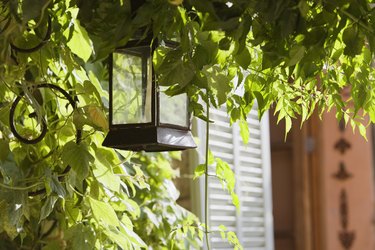
The climbing growth habit of vines -- plants that cannot support an upright form due to the weakness of their stems -- gives them an attractive and interesting visual feature that can add a compelling focal point to your landscape. You can choose from many types of vines for your yard or garden.
Annual
Video of the Day
For gardeners who want an annual vine -- a vine that lives for only one growing season -- in their landscape, a wide range of choices exist. Annual vines need replacing every year, but usually cost less than longer lasting plants and give you the option of growing different types of vines each season. Vines such as the moonflower vine, with its large white flowers, and the cardinal climber, with its attractive red flowers, provide your landscape with bright color throughout the summer.
Video of the Day
Perennial
Perennial vines allow you to enjoy your plants from season to season without having to concern yourself with replanting. The clematis group of perennial vines can provide your garden with blue, purple, red or white blossoms, depending on the species. The silver fleecevine has bright foliage, bears green-white blooms in late summer and can grow 20 to 30 feet each year. Both the Chinese and Japanese wisteria bear attractive violet to blue-violet flower clusters in spring.
Attach
Vines attach themselves to their supporting structures in different ways. Some vines, such as American bittersweet, twine around the support in a curling motion. Others, such as grapevines, use tendrils, thin flexible stems, to attach themselves to the support. The Virginia creeper uses a special type of tendril that has suctionlike properties to hold onto almost any kind of structure. English ivy, among other vines, has aerial roots that grab onto various surfaces.
Support
Whatever type of vine you select for your landscape, make sure you provide it with proper support. Avoid letting aerial root vines or vines with suction tendrils climb a wooden structure, such as a fence or railing. They can easily damage the wood. Let them use a brick or stone support or make a trellis for them out of decay resistant wood. Use copper or aluminum when creating metal supports to avoid rust.